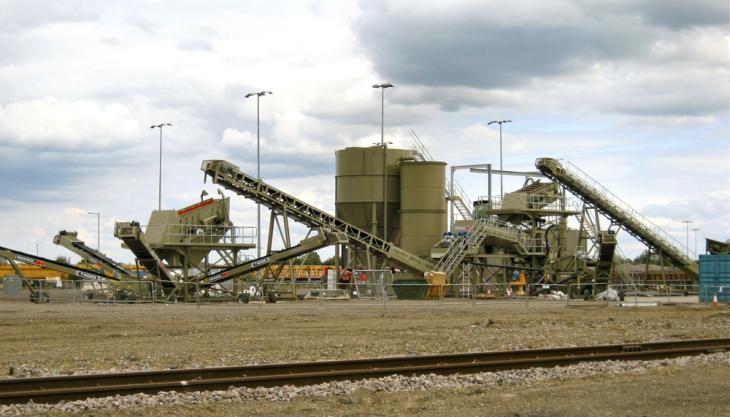New national materials recycling centre for Network Rail

DUO (Europe) washing and water-treatment plant to process contaminated railway ballast
NETWORK Rail will officially open their new national track materials recycling centre (NTMRC) on Monday 15 August. The depot, which commenced operations on 27 June 2011, covers 48ha of formerly derelict railway land at Whitemoor Yard in March, Cambridgeshire.
The new centre, the foundations of which were constructed using more than 125,000 tonnes of recycled railway ballast, will handle more than 40% of Britain’s used track materials annually, creating reusable products for the rail and construction industries.
More than 500 miles of used rail, 800 switches and crossings, and 50,000 tonnes of contaminated ballast will be processed at Whitemoor each year. Recycling the ballast alone will remove more than 2,500 lorry journeys from the UK’s roads and save Network Rail around £5 million per annum in landfill tax.
In 2010/11, Network Rail handled more than 1.5 million tonnes of used ballast as well as thousands of rails and sleepers, 90% of which were recycled at local depots and the company’s existing recycling centres in Westbury, Crewe and Doncaster. The new NTMRC in Cambridgeshire will help Network Rail achieve their goal to reuse, recycle or recover 95% of their construction and maintenance waste by 2014.
Used ballast forms a large proportion of Network Rail’s waste products and around 200,000 tonnes are currently processed at an existing facility at Whitemoor Yard, which opened in 2004. To date, the dirtiest ballast (around 50,000 tonnes per year) has been sent to landfill, but now a new hazardous-ballast washing and water-treatment facility – supplied, commissioned and operated under contract by DUO (Europe) plc – will process this spent material for reuse.
Installed in January 2011, the DUO plant will provide the new recycling centre with the ability to wash and successfully remove hazardous materials from the spent ballast, allowing Network Rail to reintroduce the clean material back into the railway infrastructure, where possible, with any surplus sold to construction markets.
Specifically designed by the DUO team, the water-treatment section of the plant ensures that any hazardous chemical elements removed from the ballast are contained within the silt. Utilizing the latest technology, the new plant incorporates a Powerscreen Finesmaster 60 compact sand plant, a 120R log-washer and a state-of-the-art plate press. The combined process removes contaminants to create further recycled products, with just 2,000 tonnes of residual waste material now going to landfill.



